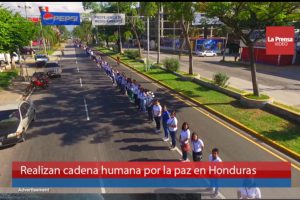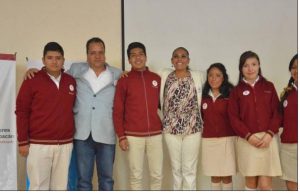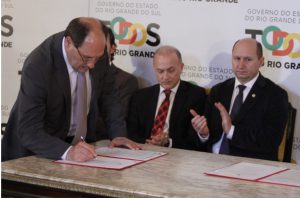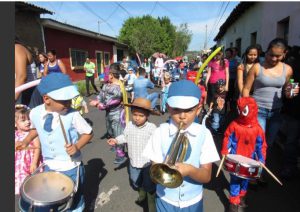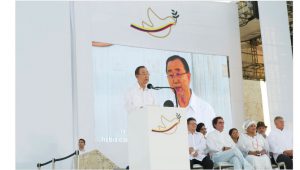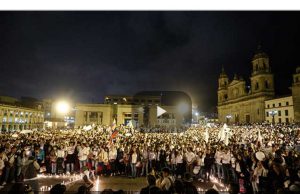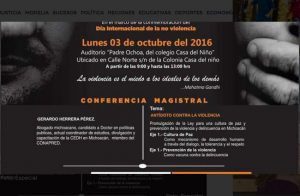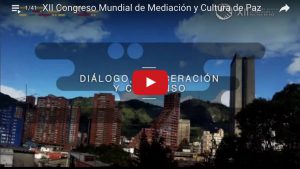FREE FLOW OF INFORMATION
An article from El Tiempo (translated by CPNN)
[November 20]:The Colombian Congress will discuss the new peace agreement reached between the government and the FARC guerrillas on Wednesday, President Juan Manuel Santos said on Wednesday, but he said it was not yet clear whether it would be up to Parliament to endorse that pact. “Former President Álvaro Uribe said last Thursday that discussion towards an agreement should take place in the Congress of the Republic, I agree,” said the Head of State.
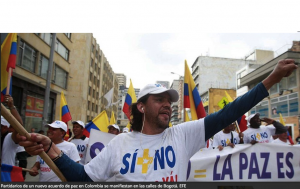
Supporters of a new peace agreement in Colombia demonstrate on the streets of Bogota. EFE
“We are going to take up the issue next week, on Wednesday … after discussion with the FARC because that is part of the agreement on how they will endorse,” said the President in a statement at the Casa de Nariño before departing to Lima, where he will participate at the XXIV Summit of the Asia Pacific Economic Cooperation (APEC) Forum.
The government of Santos and the FARC renegotiated a week ago in Cuba, where they meet for four years, the peace pact that incorporated points proposed by the opposition after the original was rejected in a plebiscite last October 2 .
The Government has not defined the mechanism to endorse the new peace agreement but it is considering three possibilities: to call a new plebiscite, to have it adopted by the Congress of the Republic, or to be adopted through open municipal councils with direct participation of citizens.
Nobel Peace Laureate, Santos said this week that he is “determined to maintain this peace and bring this agreement through Congress” so that it can be implemented quickly.
Also Santos highlighted the participation and contributions of all sectors to achieve the new agreement he said, including the “international support” from the United States through Secretary of State John Kerry, from the OAS and from the European Union.
“We have seen in different areas of the country that illegal armed groups are wanting to fill the spaces that the FARC have been leaving.” Therefore, he also insisted on the “urgency to move forward quickly” in the peace accords.
He reiterated that “the cease-fire is fragile” and recalled the incident in which two FARC guerrillas died in the north of the country and is being investigated by the Tripartite Monitoring and Verification Mechanism, made up of members of the UN, Government of Colombia and the FARC.
